Understanding Dhaka’s urbanism

Cities in South Asia are characterised by physical and visual contradictions that coalesce into a landscape of incredible pluralism. Spatial ambiguity perhaps forms the dominant image of the city in South Asia. These cities are made and remade every day. They are twitching organisms and are characterised by physical and visual contradictions that morph into a landscape of flux, charged with uncertainty but optimistic energy. In contradiction to this intrinsic character, architects, planners and politicians often bring other imaginations to bear on this landscape, perpetuated by a tyranny of external images from the "global city." This is a notion of remaking the city in a singular image, using architecture as the spectacle to represent global aspirations. In fact, the radical transformation of the physical form of the city is seen as the most immediate method to make the city viable for integration into a global network of cities and economies. New highways, flyovers, airports, corporate hotels, and convention centres are followed by a secondary development of museums, galleries, parks, and progressive urban regulations.
These infrastructures supposedly demonstrate compliance with international urban standards and are all imagined as critical elements to achieve this perceived integration. But in South Asia, these impulses are often naturally resisted by an indigenous urbanism that has its particular "local" logic – a compelling condition of blurred lines between different forms of urbanism that spatially exist simultaneously and emanate from the changing roles of people in urban society. Here, the idea of a city is an elastic urban condition – not a grand vision, but a "grand adjustment." The city is an ever-transforming landscape – a city in constant motion where the very physical fabric is characterised by the kinetic. Here, architecture is not the "spectacle" of the city, nor does it even comprise the single dominant image of the city. In contrast, festivals and other spectacles of human occupation exert a presence on the everyday landscape and dominate the image of the city.
Dhaka Delirium captures exactly this essence of South Asian urbanism. This deftly curated set of 65 essays and images by Dr Adnan Zillur Morshed – professor at the School of Architecture, Catholic University of America, Washington, DC, and executive director at the Centre for Inclusive Architecture and Urbanism, Brac University, Dhaka – open a window in our perception of the South Asian city and, more particularly, Dhaka. The book confronts and interrogates a landscape where ecology and built form, infrastructure and people all collide in an uneasy but sometimes productive tension. Where transactions are incremental, fragmented and negotiated on the streets. The street is the market as well as social space. In fact, informality is the organising principle of the city, but in this seeming chaos are embedded aspiration to be global and impulses to use formally produced architecture as an organising instrument of the static city. Here, incredible examples of modernist architecture weather gracefully – exerting their presence, albeit as somewhat alien objects in the landscape. Where the logic of what drives, makes and remakes the city is not discernible. It is clearly a delirious condition. One can't help but allude to Rem Koolhaas' seminal work in Delirious New York. This book was a celebration and analysis of New York and depicted the city as a metaphor for the incredible variety of human behaviour. A city where at the end of the 19th century, population, information, and technology explosions made Manhattan a laboratory for the invention and testing of a metropolitan lifestyle – "the culture of congestion" – and its architecture.
But this was clearly a condition in the Western world where architecture was the protagonist and depicted as the central spectacle of the city. How, then, do we capture and represent a city undergoing a similar metamorphosis in the "majority world"? I use this category specifically picking up on this description coined by the Bangladesh-based photographer Shahidul Alam to describe the part of the globe where a majority of the planetary population lives. This term is being increasingly used, to replace the terms "developing world" or "third world," which most Southern practitioners consider derogatory. And the notion of the "majority world" is perhaps more accurate, because it refers to the metric of people in space, rather than other economic developmental metrics. For, finally how people organise themselves in space to dwell and live together to make the city becomes the critical question. And it is in this spirit that Dhaka Delirium begins to show us through confronting a range of questions and observations as to what might be the appropriate lenses to understand the megacity and political capital of Bangladesh, as well as by extension open up our understanding of urbanism in South Asia more broadly.
Dhaka Delirium captures exactly this essence of South Asian urbanism. This deftly curated set of 65 essays and images open a window in our perception of the South Asian city and, more particularly, Dhaka. The book confronts and interrogates a landscape where ecology and built form, infrastructure and people all collide in an uneasy but sometimes productive tension. Where transactions are incremental, fragmented and negotiated on the streets. The street is the market as well as social space. In fact, informality is the organising principle of the city, but in this seeming chaos are embedded aspiration to be global and impulses to use formally produced architecture as an organising instrument of the static city. Here, incredible examples of modernist architecture weather gracefully – exerting their presence, albeit as somewhat alien objects in the landscape. Where the logic of what drives, makes and remakes the city is not discernible. It is clearly a delirious condition.
In the series of essays in this book, the subjects covered by Adnan Morshed are diverse. They are accessible as they originally were written largely for The Daily Star and a few for BDNews24.com, both widely accessed platforms in Bangladesh and internationally. Given this venue of a rather public platform, the essays are accessible to the citizen, yet articulate the issues in the city at a level of intellectual engagement that would rouse a debate among academics, professionals and policymakers alike. Some of the many themes he writes about are climate change, public spaces, transportation, heritage conservation, ecology, football culture, housing, terrorism in the city, as well as an absolutely fascinating fictional conversation between Louis Kahn and Le Corbusier on their fictional visit together to Dhaka! A range that gives us multiple perspectives in understanding the city of Dhaka through both its people and culture, as well as its architecture and urbanism.
Clearly, no single lens can discern the emergent patterns that we see in the South Asian city. Perhaps the effective way to look at urbanism in South Asia is by looking at it from different perspectives. Perhaps to look at it as though through a kaleidoscope; it's not about a single view, but turning the kaleidoscope to see new patterns emerge. This requires one to practise the suspension of quick judgements and instead understand underlying protocols and procedures in a given context, before making any decision on the nature of the problem. This is necessarily a grounded activity; it is a form of reflexive practice where choices and judgements are seen as a reiterative process. This process oscillates between engaging with the on-the-ground reality and reflecting on the patterns one is observing and experiencing. Through this process, feedback loops for more effective action are established.
In Dhaka Delirium, Adnan Morshed speaks to us as a design professional, student, academic, public intellectual, activist, policymaker, and a concerned citizen. He provokes the professionals to play a greater role in the public sphere. As architects and practitioners of urban and landscape design, we have to build constituencies that engage in organising people to act. We are trained to see spatial possibilities in ways societies can be organised productively and equitably, and so we should feel compelled to act on these grounds.
Kaleidoscopic thinking is about continuously including a broader constituency in the patterns one sees and imagines. This is a crucial first step for any form of public engagement. And it is here that Dhaka Delirium and Adnan Morshed's contribution are significant. He is an academic and practitioner, and one rooted on the ground but also who can take a long view on his city. He uses various media, issues, and venues to share his ideas and observations. He engages with the public realm in an accessible and productive way. He communicates to the layperson through local newspapers while draws academics closer to the issues through more scholarly writing. And it is these disparate formats and experiences over two decades that seamlessly come together in Dhaka Delirium.
In Dhaka Delirium, Adnan Morshed speaks to us as a design professional, student, academic, public intellectual, activist, policymaker, and a concerned citizen. He provokes the professionals to play a greater role in the public sphere. As architects and practitioners of urban and landscape design, we have to build constituencies that engage in organising people to act. We are trained to see spatial possibilities in ways societies can be organised productively and equitably, and so we should feel compelled to act on these grounds. Architecture, planning and landscape architecture are deeply political professions. Avoiding political questions is actually absolving ourselves of that responsibility. Engaging with political questions can be done in many ways, ranging from advocacy and organising action to creating the tools or instruments for advocacy – they are equally important. The tools for advocacy include research, writing, and communication to inform public opinion. It is here that architecture, landscape and planning education becomes important in its broadest sense.
While it is the education of design professionals, it is also the education of the public in the understanding and cultivation of environmental values and the resulting cultural values. In countries like Bangladesh, South Asia and, the "majority world" more broadly, students move from architecture to urban design or planning while pursuing postgraduate studies. They often do this because they see architecture as serving only the indulgences of the rich, whereas in urban design or planning, they see an opportunity to serve society in the larger ambit. Adnan Morshed asks this question in a pointed way in one of the essays: "I have been thinking about the 'fairness' measure of cities in Bangladesh. As I go around in Dhaka, I keep wondering, is this city fair to all its people? Is this city guided by a basic philosophy of social justice? Again, fairness and social justice are abstract notions, and often ignored quietly and cleverly as left-leaning obstacles to a neoliberal worldview, typically rigged to favour the privileged and the powerful. But we need to decide how we develop our cities and what kind of humanity we institute in them." This is an underlying question that lingers through the book, and is perhaps the critical one for all of us as citizens and professionals to ask today.
However, we are not asking this question enough today as a profession – and when we are, we do it largely for circulation among our peers. We will be judged as a profession by the issues we engage with and where the public sees us collectively expending our energy. This is the range of challenges that Dhaka Delirium outlines for us through the different essays – issues that all need spatial practitioners to more actively engage with through speculative thinking as well as action. Our focus as a profession has been caught up in a landscape of indulgence, while the issues our societies face on the ground have to do with another reality: the lack of amenities for the poor, severe shortage of affordable housing, insensitivity towards the natural landscape and ecology, and so on. These issues should be where we expend our energy and focus.
If history has to judge our profession in the last three or four decades, it will be a judgement that will damn us for forgetting about a majority of the population and society we were supposed to serve. Instead, our profession has been completely seduced by the rich and, by extension, the global capital that is disrupting our society and the well-being of a majority. Dhaka Delirium, in the context of this megacity in South Asia, reminds us as professionals and citizens of our responsibilities and commitments to society at large.
Rahul Mehrotra is founder principal of architecture firm RMA Architects of Mumbai+Boston, and is professor of urban design and planning and chair of the Department of Urban Planning and Design at the Harvard Graduate School of Design in the US.

 For all latest news, follow The Daily Star's Google News channel.
For all latest news, follow The Daily Star's Google News channel. 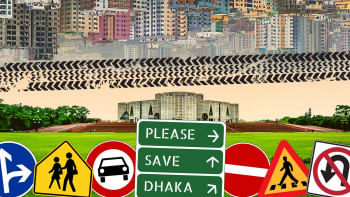
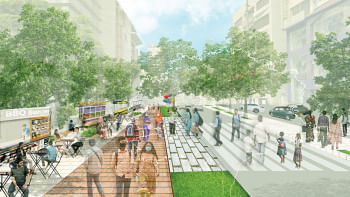
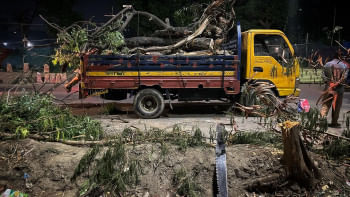

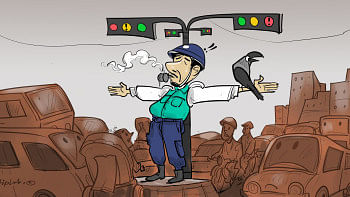
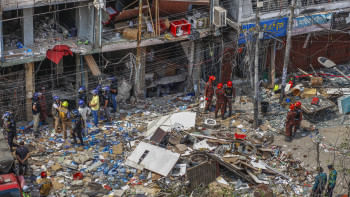


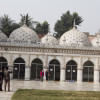
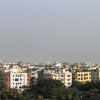
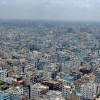
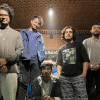



Comments